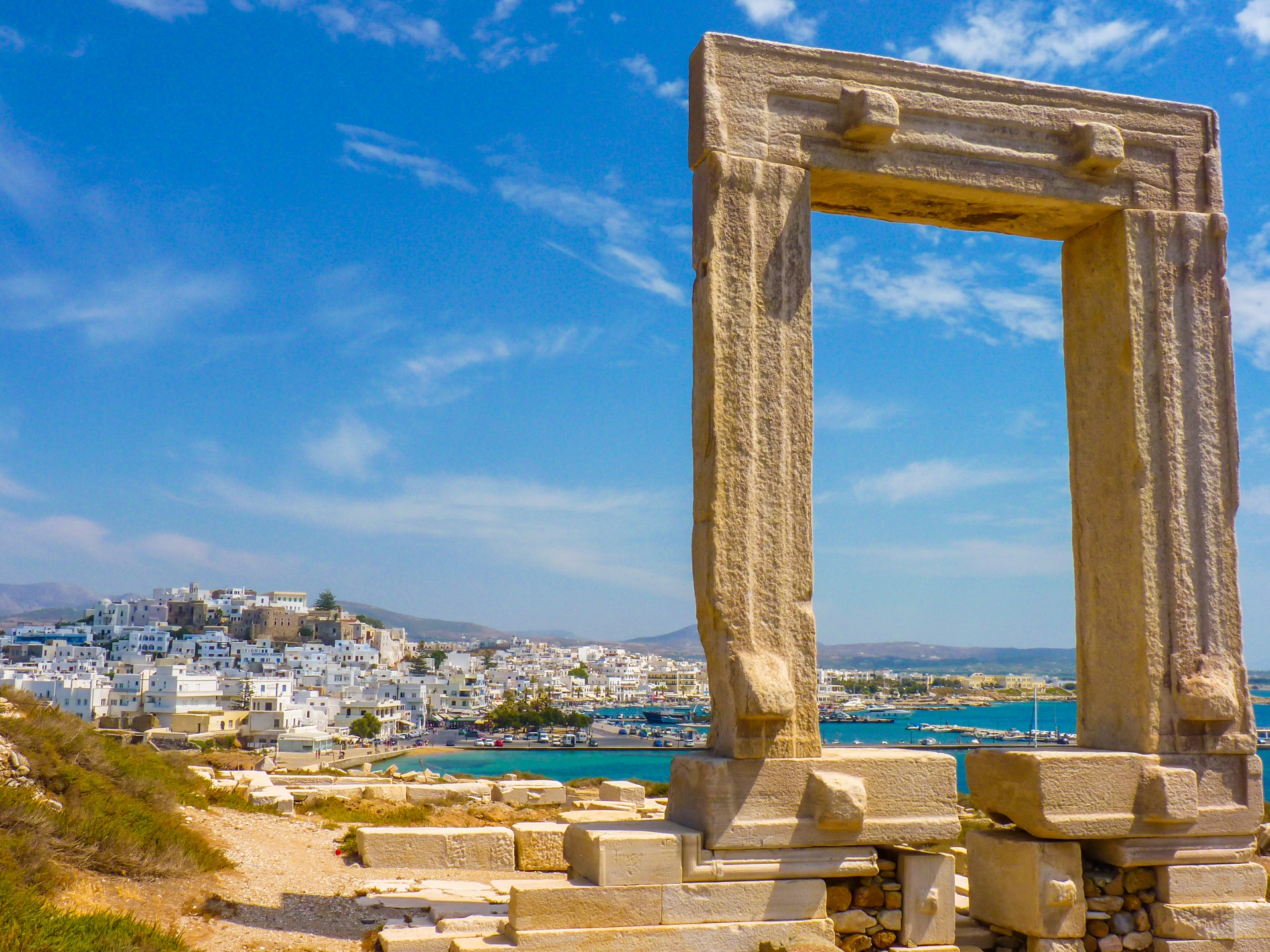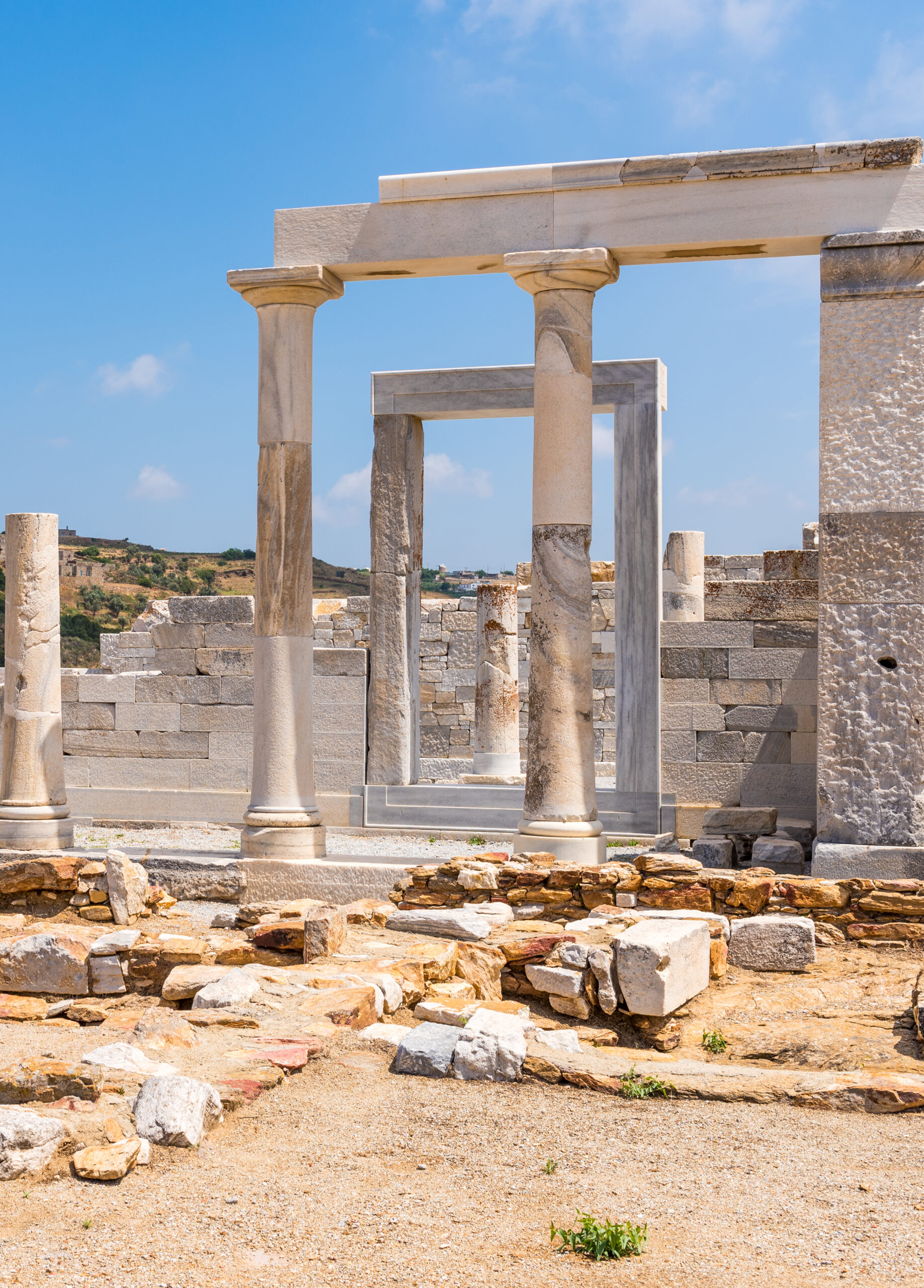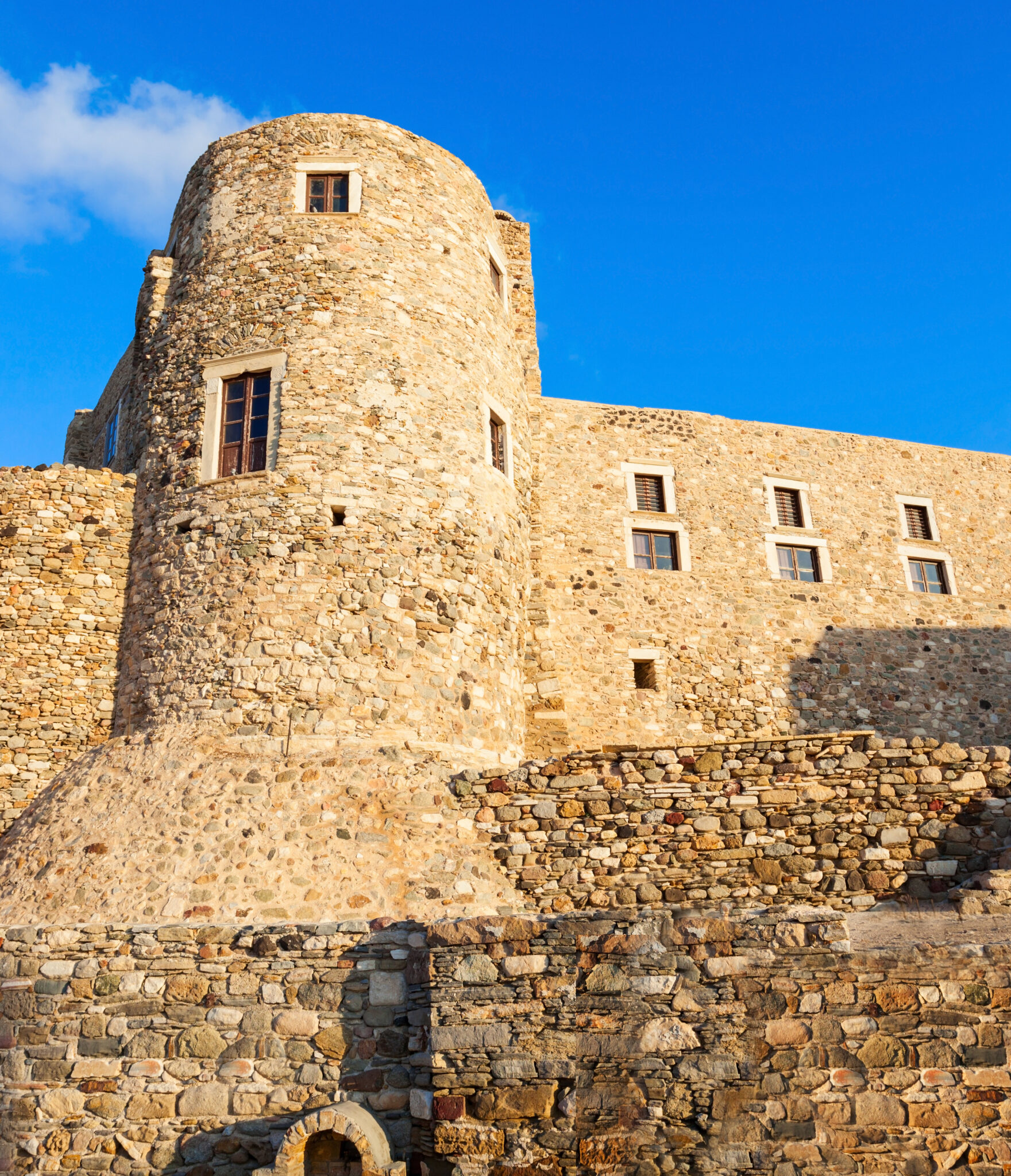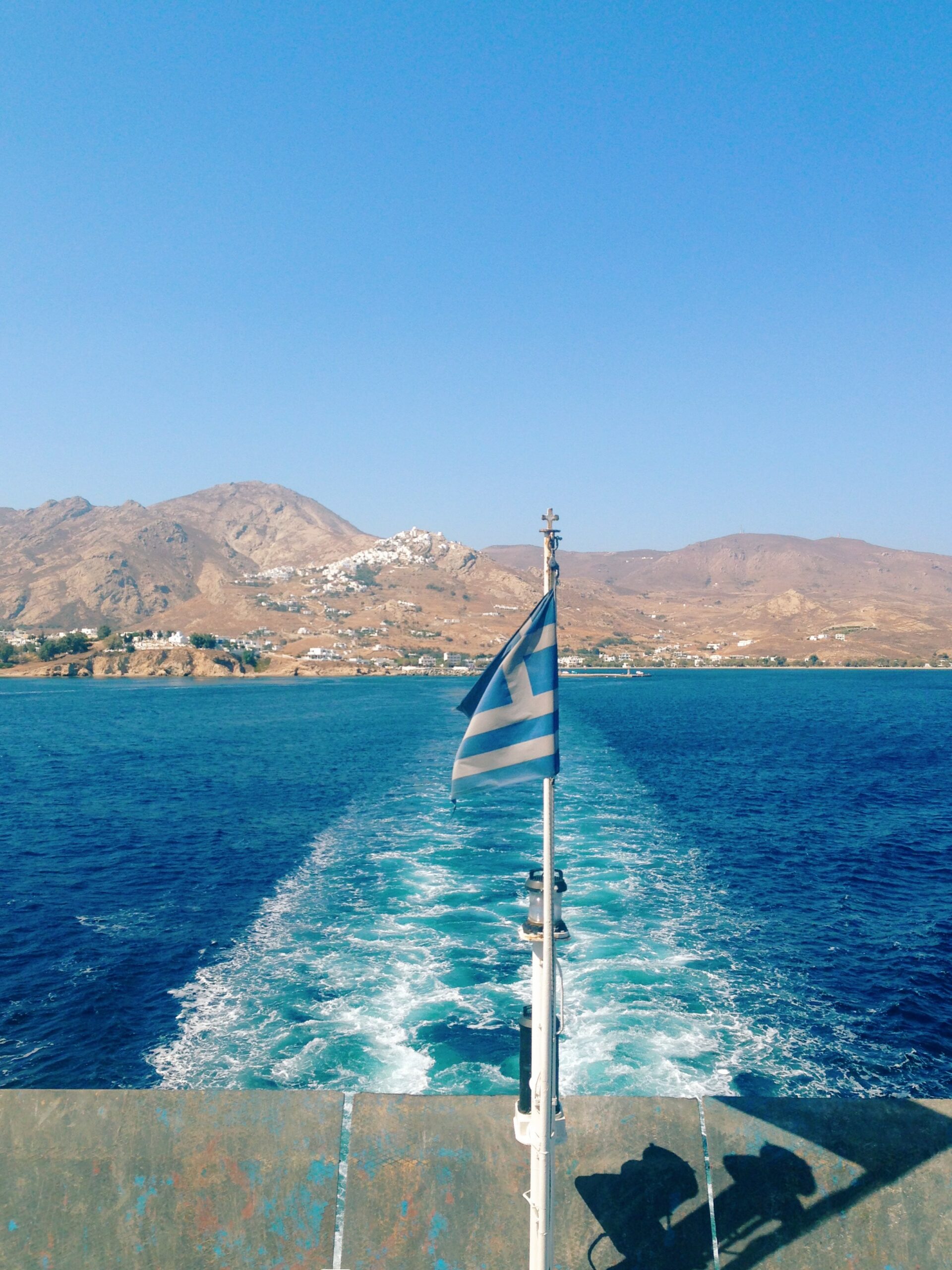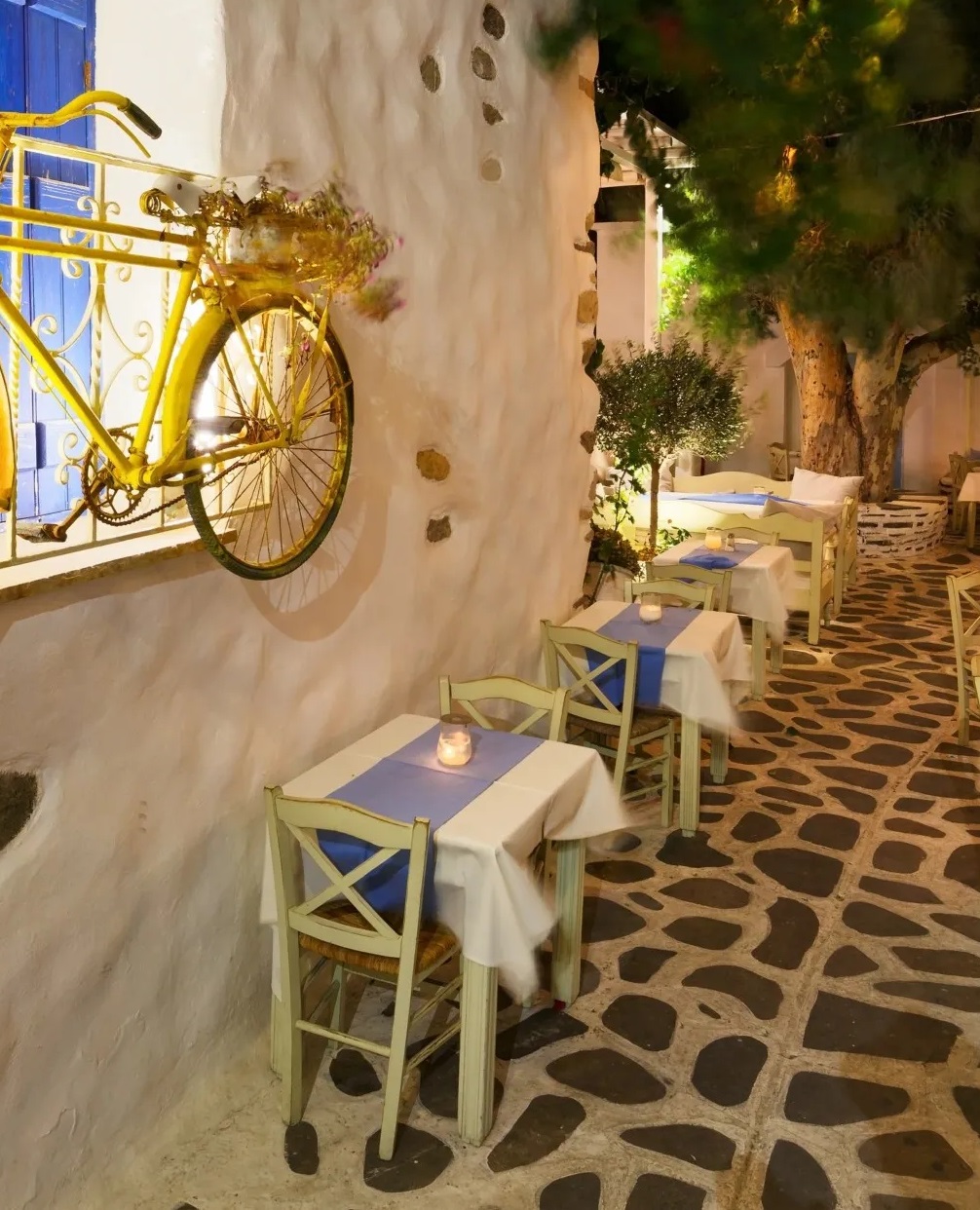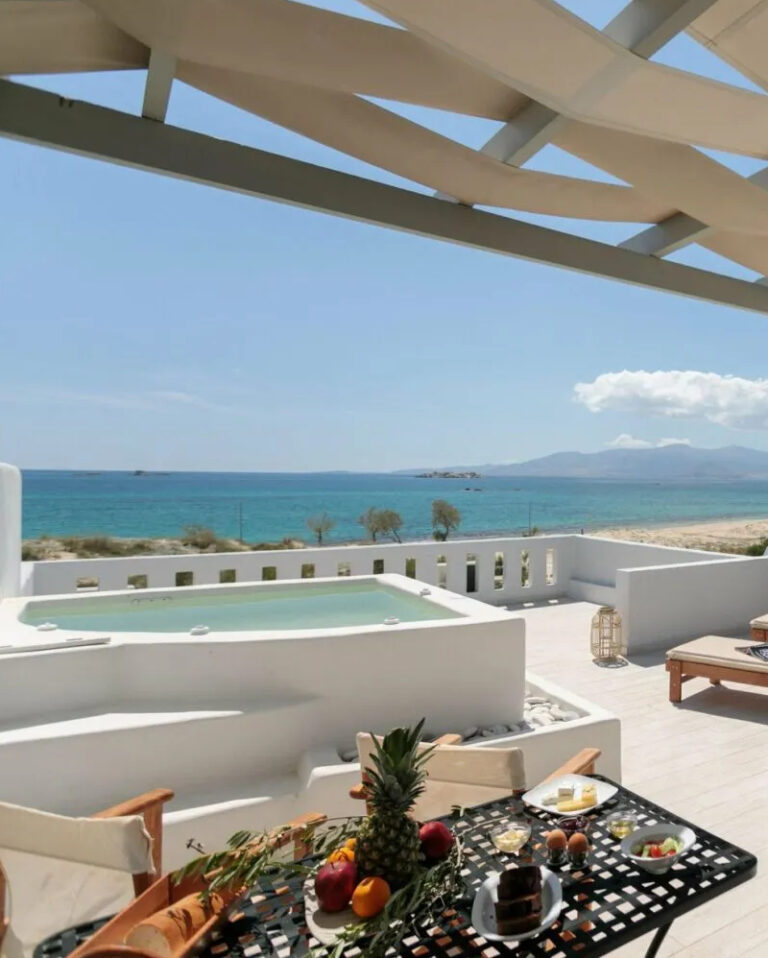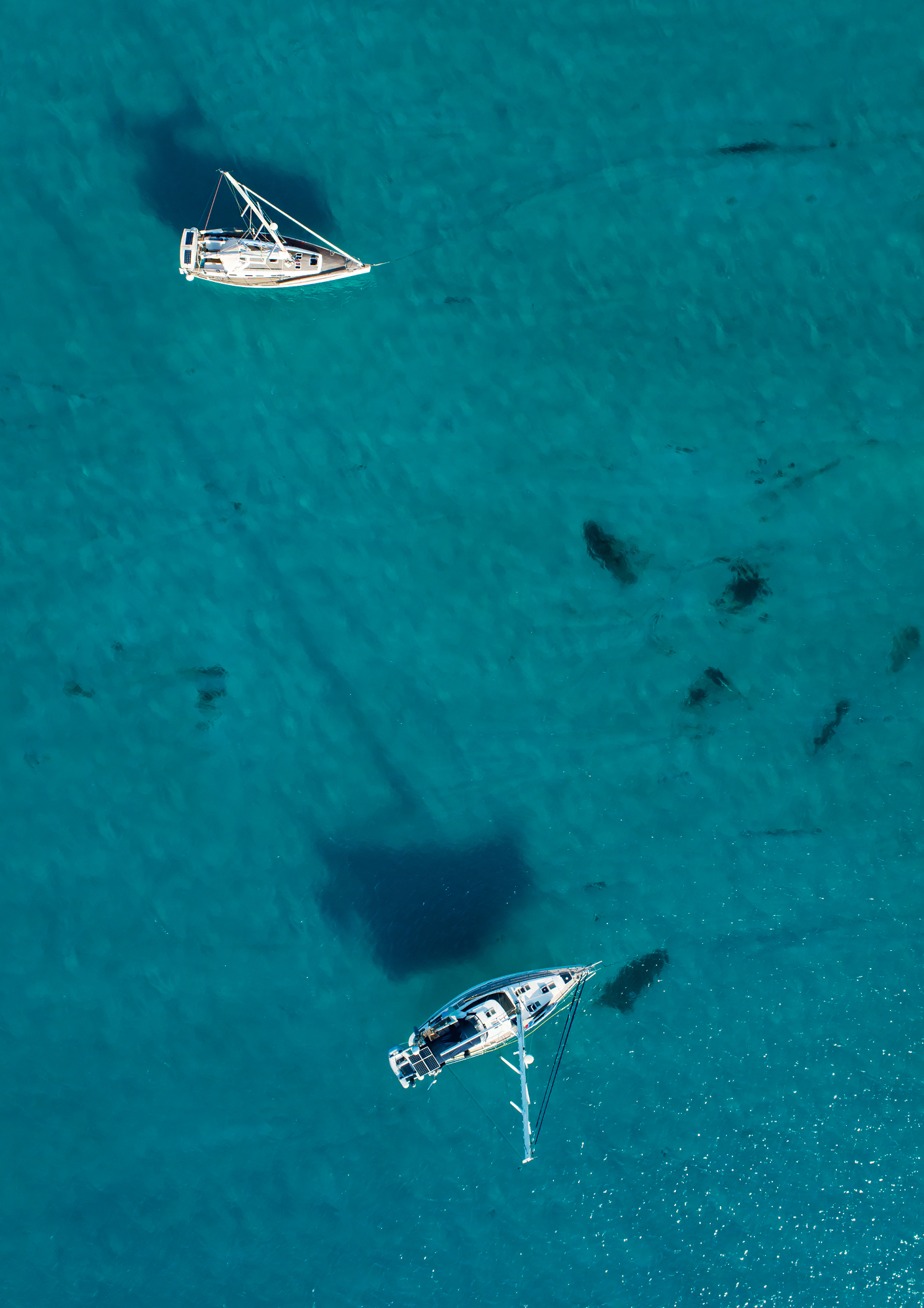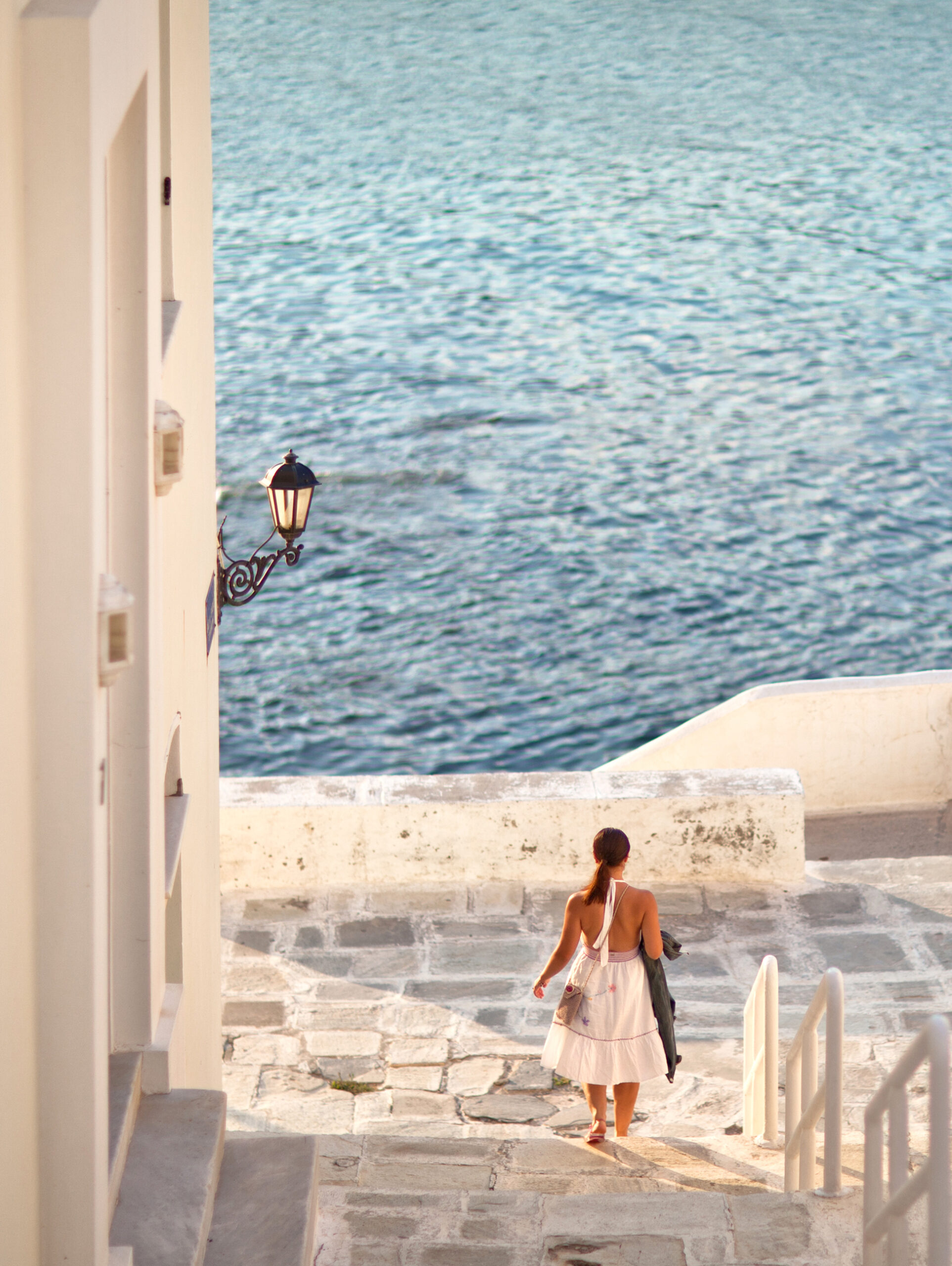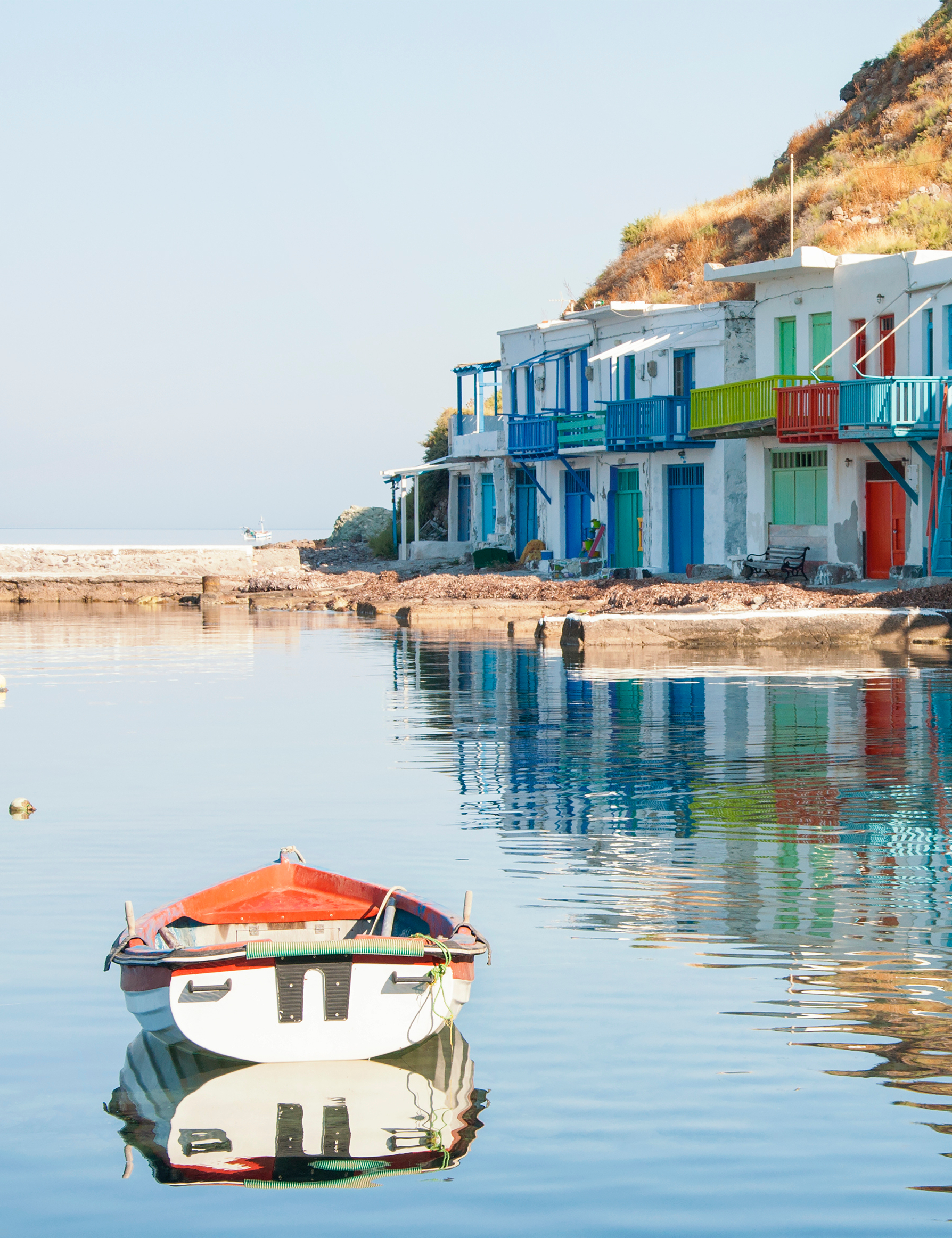The largest and most fertile of the Cyclades, Naxos is immediately different to its barren and weather-beaten neighbours. Its green and mountainous highland scenery is generous, this is an island of prosperity and abundance with endless potato fields, grazing cows, and fruit and olive groves framed by the pyramid of Mount Zas, the highest point in the archipelago. Inhabited for 6,000 years, the island is full of history and monuments with classical temples, medieval monasteries, Byzantine churches and Venetian fortresses and towns that vary from a Cretan mountain bastion to the seaside capital with its elegant Venetian influence.
However, the interior is not much troubled by visitors in Summer who cling to lively Naxos Town and the developed beaches to the south west. The coastline south of Naxos Town is a beach strip without equal in the Aegean with kilometre after kilometre of excellent sandy beaches fronted by Tiffany green seas as clear as their diamonds.
Naxos itself was associated with the tragic myth of Ariadne, princess of Crete and daughter of King Minos. She helped Theseus thread the labyrinth and slay the mighty Minotaur and in return he promised to marry her. Landing at Naxos on the way to Athens, Theseus abandoned her and the jilted Ariadne laid a curse on her former lover who forgot to change the sails on his ship. At Cape Sounion, Aegeus, father of Theseus, saw the black canvases and thought his son was dead and threw himself into the sea that now bears his name, the Aegean. Dionysus saw Ariadne’s tears and descended in a leopard-drawn chariot from the heavens to marry her, with the smitten god setting her bridal veil in the sky for all to sea as a token of his eternal love, the Corona Borealis.
Large enough to be self-sufficient, Naxos is an alluring mix of an attractive main town, a succession of wonderful and easily accessed sandy beaches, an interior landscape of gorgeous green valleys and picturesque villages and a rich cultural heritage with many historical sites and a series of festivals in the summer.
Wander down to the Portara in the early evening, the mighty monolith that greets visitors to Naxos Town, and watch as the sun sets down below the ruin topped skyline. Stroll back through the web of steep cobbled alleys below the fortified Venetian mansions and the hilltop Kastro, stopping at a taverna to sample the fabulous natural produce. Writers, both ancient and modern, have often labelled Naxos as the most beautiful of the Cyclades and they just might be right.



